
Perfection does not exist; therefore, it is an unattainable standard. Why are we so focused on labeling someone "prefect" at all, but even more so when viewing an edited version of humanity? Let’s look at where current beauty standards come from and what “perfection” really is, a false advertisement.
Jennifer Anniston, Angelina Jolie, and Beyonce have long been regarded as some of the most beautiful women of our time.
And yet the truth is those regarded as “perfect,” still don’t meet the bar of perfection for those that seek to use their images.
What does this say, when even “perfection” isn’t quite perfect enough?
What follows is an exploration using a new AI tool that could provide a much needed weapon in the fight against the increasingly unrealistic portrayals of beauty in media and marketing.
The tool is called a FAL Detector, and was developed by UC Berkeley and Adobe Research. The AI model the tool leverages is a binary classifier using a Dilated Residual Network, trained on images that had been warped using Adobe’s “Face-Aware Liquify” feature. The model outputs a heatmap of the locations on the face where this tool has been used. The closer to red, the more manipulation of the image at that location.
The AI also attempts to “fix” the image, or reverse the use of the Face-Aware Liquify tool. Some of the following examples include these AI “fixed” versions (only cases where the fixed version looked noticeably different).
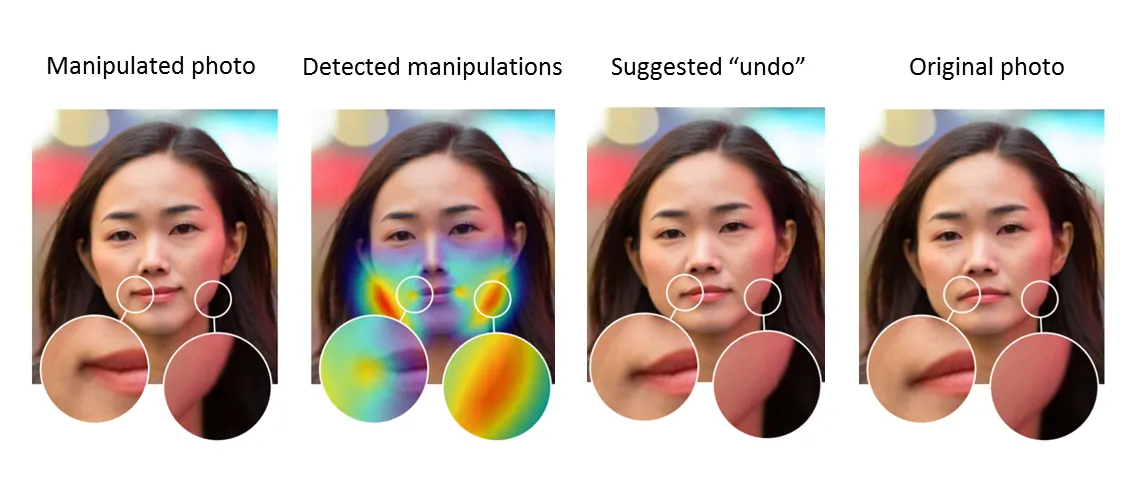
Jennifer Aniston has long been admired for her beauty. To many women, her features are iconic. Sadly, the decision makers at magazines, ad agencies, and even the press regularly photoshop her look, making consistent editorial decisions about what parts of Jennifer’s face don’t match their idea of perfect beauty.
We examined 20 Magazine Covers featuring Jennifer Aniston with a close shot of her face. Of these, the AI picked up clear use of the “Face-Aware Liquify” photoshop tool in 50% of the samples. The most frequently edited parts of her face in the 10 examples we found were:
1. Jaw (6 out of 10 images)
2. Chin (6 out of 10 images)
3. Lower Lip (3 out of 10 Images)
Examples:
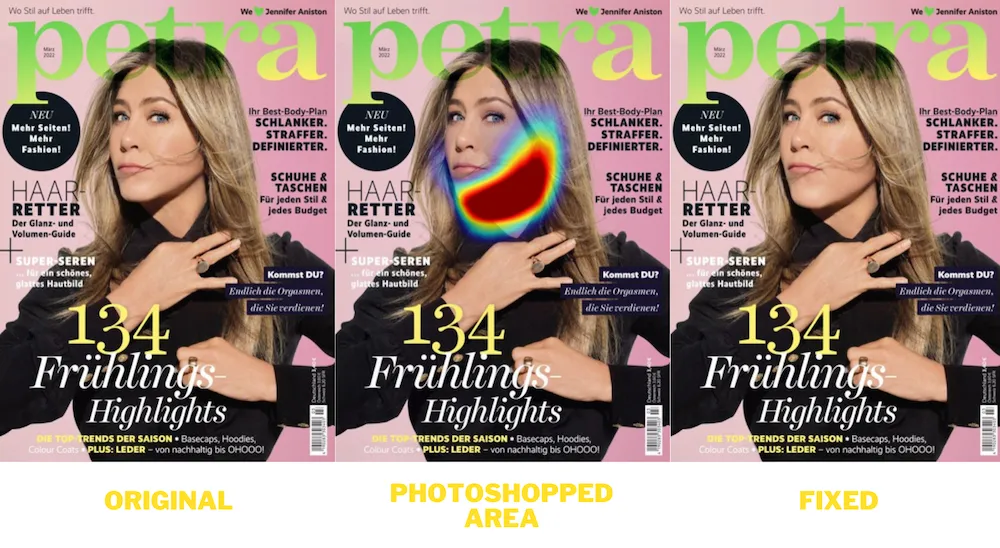
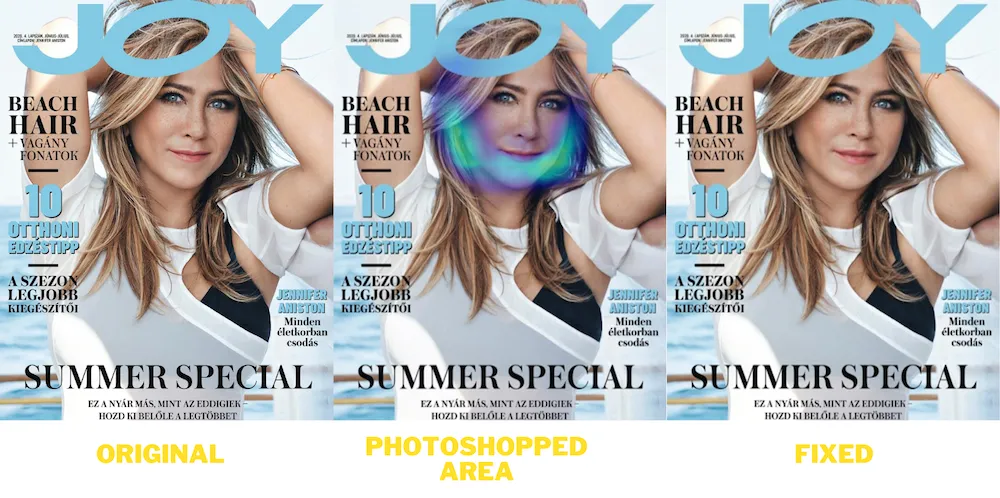

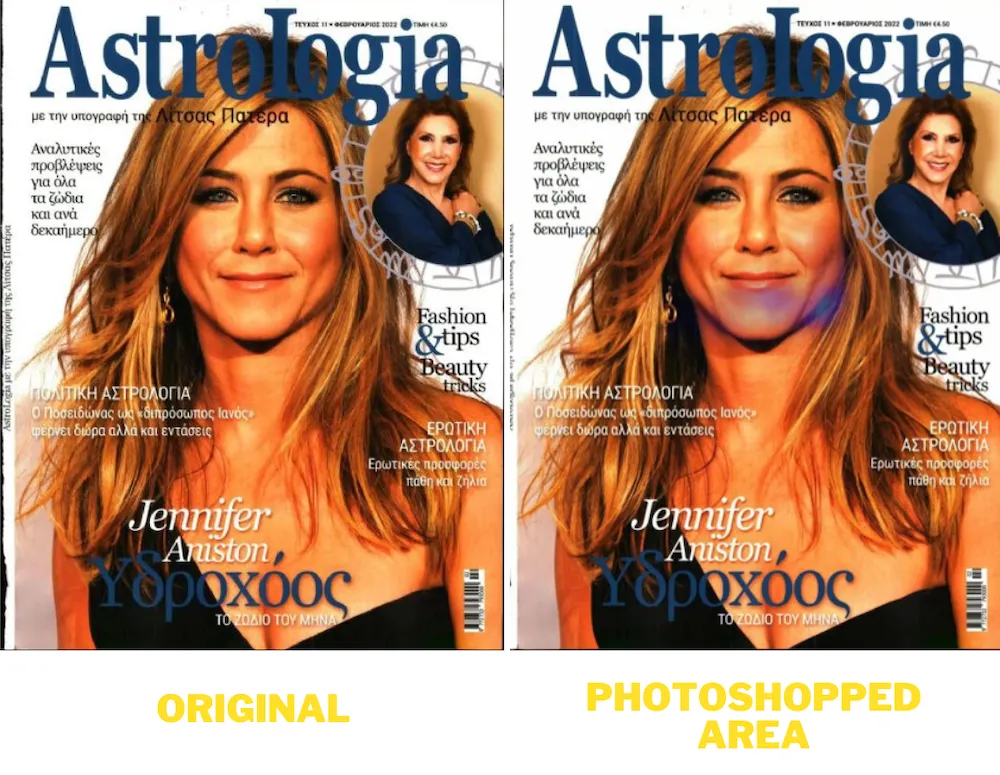

Even Queen Bey can’t escape the critical eye of magazine photo editors. Admittedly, it was actually much more difficult to find clear examples of use of the “Face-Aware Liquify” photoshop tool on Beyoncé. This is for a few likely reasons:
In the few examples where AI found there to be editing, Beyoncé’s eyes, Nose, Chin, Lower Lip, and the corners of the mouth were the primary locations.
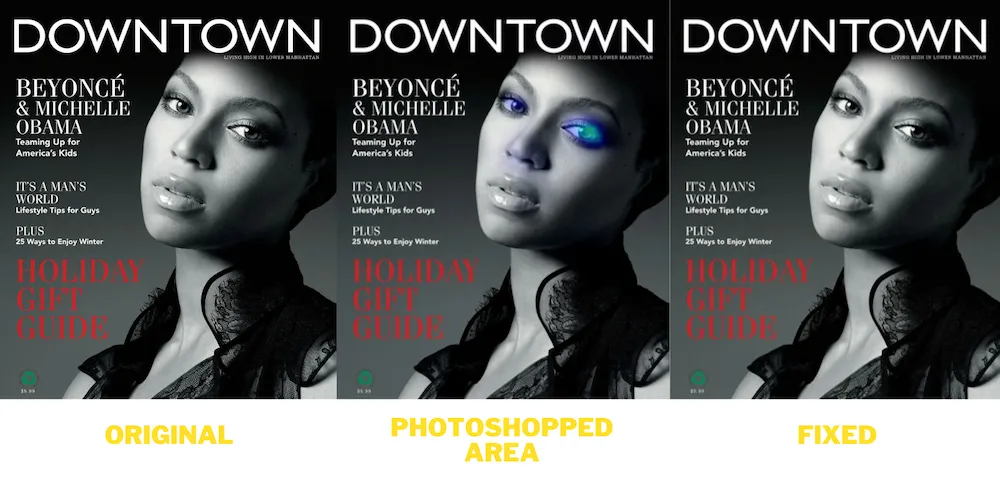
Similarly to Jennifer, Angelina is also often the victim of aggressive photoshopping. In the 20 samples of Magazine Covers we looked at of Angelina Jolie, roughly 50% had clear evidence of using the “Face-Aware Liquify” photoshop tool.
The most frequently edited parts of her face in the 10 examples we found:
1. Jaw (5 out of 10)
2. Corners of the Mouth (3 out of 10)
3. Lower Lip (2 out of 10)
Examples:
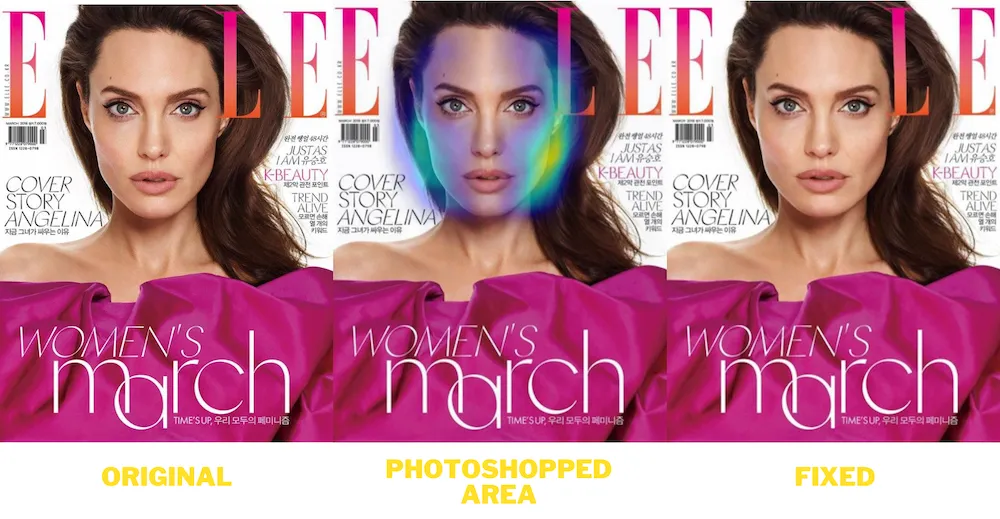
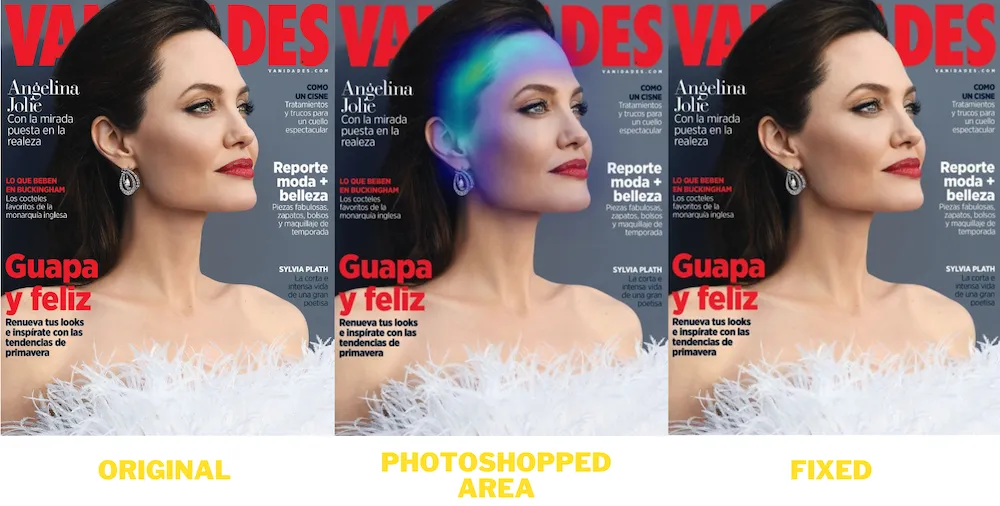

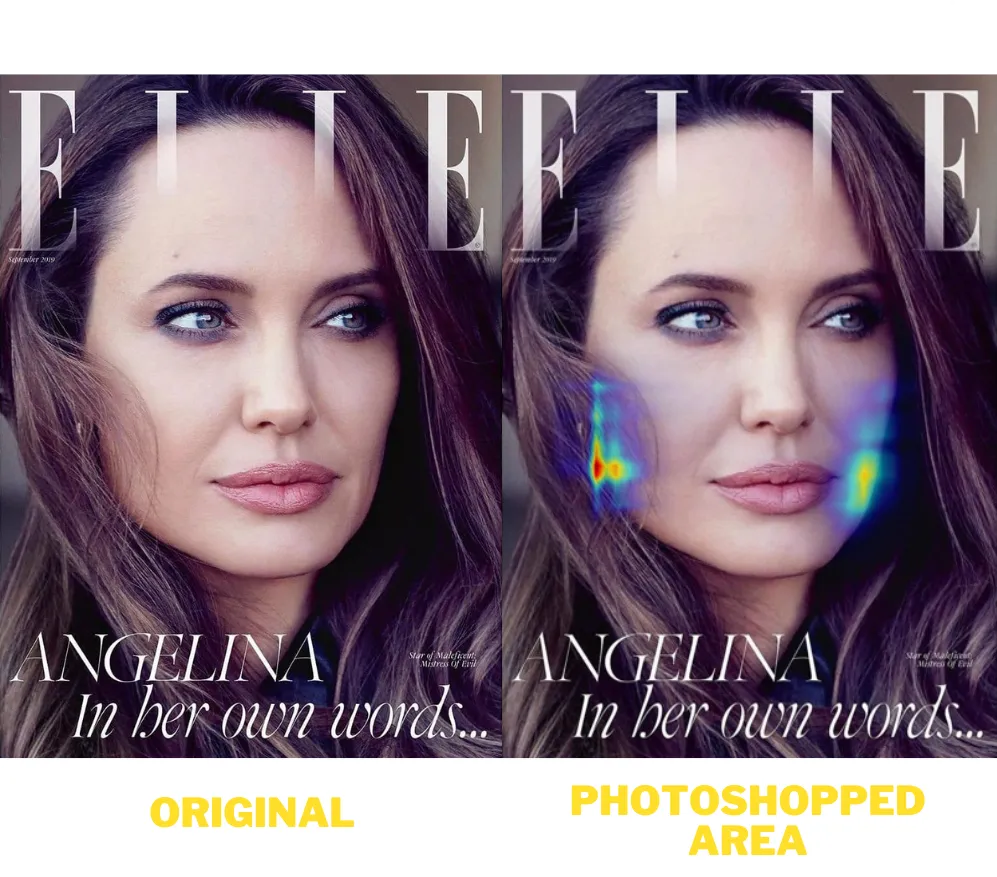
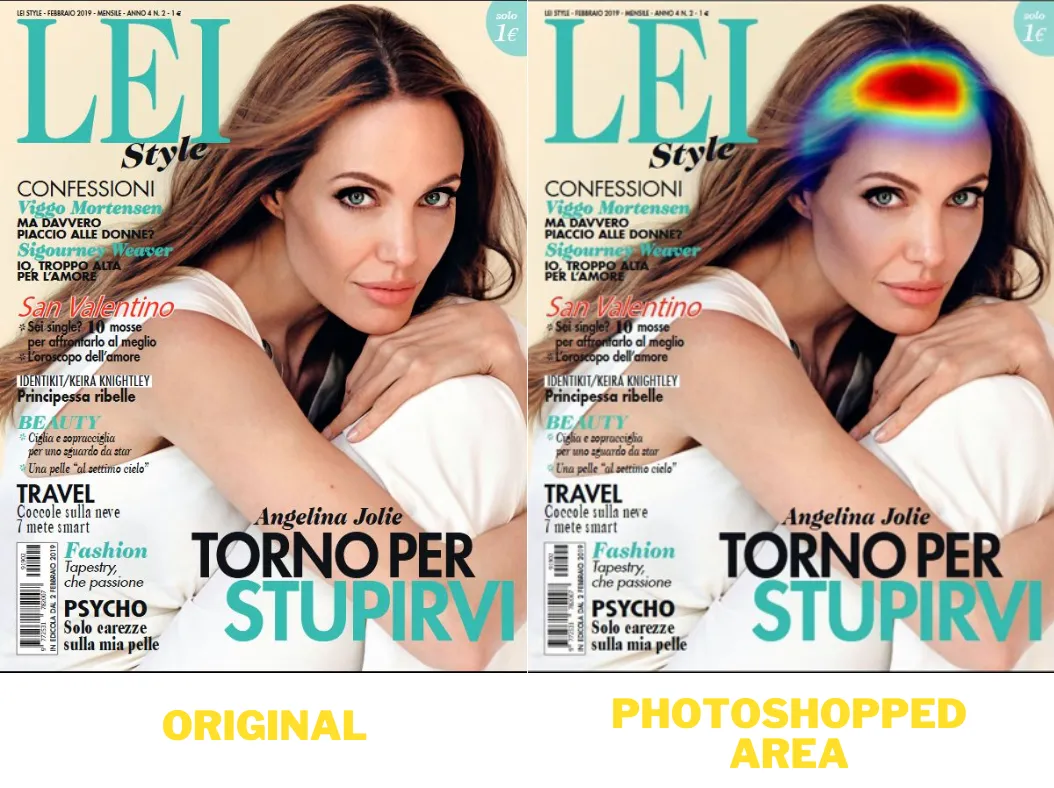
New and better tools for photo and video manipulation are here, and only improving by the month. These tools will undoubtedly be leveraged to their maximum potential to create perceptions in you, the viewer.
Without tools to help us understand how the images we see are manipulated, we have little hope in understanding the motives and goals of those who create manipulated content presented as unmanipulated. Media and content literacy can be improved when the curtain is pulled back, the manipulations made apparent. Even the “perfect” aren’t perfect enough.






Within is committed to providing accurate and up-to-date information on eating disorders and mental health.
Read our editorial policy.